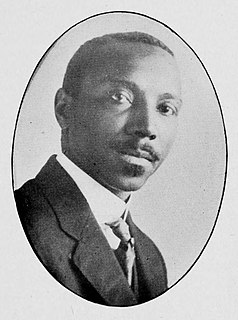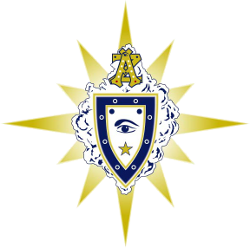
Thomas Wyatt Turner was an American civil rights activist, biologist and educator. He was the first Black American to receive a PhD in Botany, and helped found both the NAACP and the Federated Colored Catholics.

John Casper Branner was an American geologist and academic who discovered bauxite in Arkansas in 1887 as State Geologist for the Geological Survey of Arkansas. He was chair of the Departments of Botany and Geology at Indiana University and later at Stanford University. He was a member of the founding faculty at Stanford and served as the university's second president. He served as President of the Geological Society of America in 1904. He was President of the Seismological Society of America in 1911. He was an expert in Brazilian geology, among many other things.

Alonzo Barton Cornell was a New York politician and businessman who was the 27th Governor of New York from 1880 to 1882.

William North Rice (1845–1928) was an American geologist, educator, and Methodist minister and theologian concerned with reconciliation of science and religious faith.

Charles Edwin Bessey was an American botanist.

Alpha Zeta (ΑΖ) is a professional fraternity for students and industry professionals in the agriculture and natural resources fields. Founded in 1897 at Ohio State University, Alpha Zeta is the first and oldest collegiate society for agriculture. Today, Alpha Zeta has over 125,000 alumni and 1,000 student members at 30 universities.
William Trelease was an American botanist, entomologist, explorer, writer and educator. This botanist is denoted by the author abbreviation Trel. when citing a botanical name.
William Callyhan Robinson was an American jurist and academic.

William Ashbrook Kellerman was an American botanist, mycologist and photographer.
The University of Wisconsin–Madison College of Agricultural and Life Sciences offers the one- or two-year Farm and Industry Short Course (FISC) program to high school graduates interested in farming or one of Wisconsin’s many other agricultural industries. The program runs from November to April and has an average enrollment of 135 students.

The Allen Centennial Garden is a free public garden on the grounds of the University of Wisconsin–Madison. The grounds feature the Agricultural Dean's House, a brick Queen Anne-style home built in 1896, and the home of the first four deans of the College of Agricultural and Life Sciences. In 1984 the house itself was listed on the National Register of Historic Places.
Warren Powers Laird, FAIA was an American architect from Minnesota. He was Dean of the School of Fine Arts of the University of Pennsylvania from 1920 to his retirement in 1932.
Alden Springer Crafts was an American professor of botany, known as the first person in the United States to have the title "Weed Control Scientist" in academic employment. He was President of the American Society of Plant Physiologists for 1955, and President of the Weed Society of America for 1958–1960. Crafts was the editor of the Annual Review of Plant Physiology from 1957–1959.

Henry Leffmann was an American chemist, physician and writer.

Henry Prentiss Armsby was an American agricultural chemist, animal nutritionist, and academic administrator. He served as Vice Principal and Acting Principal of the Storrs Agricultural School (1881–1883), associate director of the Wisconsin Agricultural Experiment Station (1883–1887), and director of the Agricultural Experiment Station (1887–1907) and the Institute of Animal Nutrition (1907–1921) at the Pennsylvania State University.











